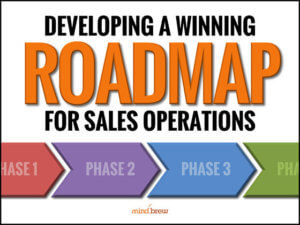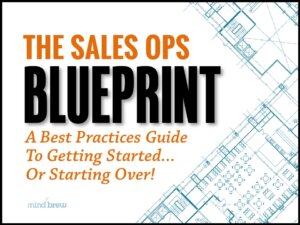In a lecture titled “Life and Mind in the Universe,” Nobel laureate George Wald said:
It would be a poor thing to be an atom in a universe without physicists. And physicists are made of atoms. A physicist is the atom’s way of knowing about atoms.
It’s an interesting idea, and a more poetic way of saying that sometimes systems evolve to become self-aware. In sense, the existence of physicists has enabled the universe to become aware of the universe.
And of course, the same thing happens on a smaller scale within organizations.
When sales teams become self-aware
Within a sales organization, the reps are all about action. They are going, going, going. On to the next prospect. On to the next deal to close.
Sales leadership sets the direction for the sales team. Go here. Do this. Sell that.
But it’s the Sales Ops team that really reflects on those activities. We are the ones asking, “What’s really happening here?” We are the part of the system that analyzes, adapts, course-corrects, and improves.
In other words, we are the brain — the part of the system that understands itself.
This framing gives us a new way to think about our Sales Ops role. We aren’t just here to create reports or manage tools or keep processes running. We are enabling the entire sales organism to reflect, learn, and evolve.
Here are some examples:
- Pattern recognition: Because they have access to all the data, sales ops pros can see trends in deal velocity, segment performance, rep behavior, or discounting patterns that no individual rep or manager can see on their own.
- Strategic memory: Sales ops also serves as a repository for institutional knowledge. Again, their data analysis allows them to see what worked and what failed, so the team doesn’t repeat mistakes or forget lessons.
- Decision input: Sales ops provides the data, scenarios, and context leadership needs to make better decisions around headcount, compensation, product focus, or territory design.
- System calibration: Anomalies in their data allows sales ops to spot where the tools, processes, or targets are out of sync with actual sales behavior — and adjust accordingly.
- Future-state thinking:Sales lives in the now. Sales Ops should be scanning for what’s next: what’s changing in the market, the pipeline, in buyer behavior, or in operational efficiency.
Translating insights into action
Being the brain doesn’t just mean being smart. Brains don’t just process data and retain it. They also respond.
Similarly, sales ops need to translate intelligence into actual changes within the organization. If they see that a sales rep is gaming the system to increase their pay at the expense of margins, they can recommend changes to the compensation plan. If they see that actual sales are out of line with projections, they can alert management to the potential risk. If sales wants to make a deal that doesn’t align with strategy, they can push back and prevent mistakes before they happen.
So what about you?
Is your team the brain of your organization? Are you surfacing the right insights? Are you helping everyone else in the system get smarter?
Or are you plodding through clerical tasks and calling it a strategy?
If your team is interested in getting better at being the brain of the organization, the following webinars are a great place to start:
- Developing a Winning Sales Ops Roadmap
- From Tactical to Strategic Sales Ops
- The Sales Ops Blueprint
- Golden Rules of Sales Ops
George Wald also said, “I tell my students to try early in life to find an unattainable objective.” If you’re looking for an unattainable objective, how about try to understand everything happening in your sales organization. You will never achieve it, but on the journey towards it, you will be an invaluable resource to your organization.















